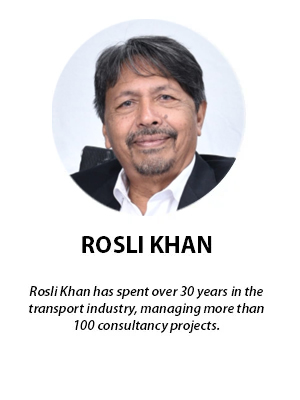
With Budget 2024 around the corner, allow me to offer the government several innovative ideas.
For the record, I do not intend to charge for this consultation. In fact, if clarification or guidance on implementation is required, I am available to assist.
I often take public transport, especially the MRT. To my mind, the service is underutilised. Despite their affordable fares, these modes of transport do not seem to attract many users.
I believe the primary reason lies in the lack of first and last mile connectivity.
That being the case, here are several new policy initiatives the government should consider.
Public transport investment
The government must allocate more funds to develop an efficient, comfortable and comprehensive public transportation system. This should include using minibuses for first mile and last mile connectivity, hydrogen trams and creating more dedicated lanes for buses.
These systems will create greater demand for our expensive LRT and MRT systems and offer a strong alternative to car ownership and dependence.
Integrated multi-modal systems
The government must also work toward integrating our various public transport systems. This can be done by forging seamless connections between different transport modes, especially the MRT, LRT and KTM, such as through the use of a single ticket.
There is also a need to properly sync bus routes with train stations and ensure that access facilities such as bus stops allow for a smooth transfer of passengers to trains and vice versa.
Presently, many MRT stations, including one in Cyberjaya, are isolated, while the one in Kwasa Damansara is difficult to access.
Fuel taxation
The government must work towards gradually phasing out fuel subsidies in favour of a more adaptable taxation system.
The savings can be re-invested into developing sustainable public transport infrastructure across the country – not just the Klang Valley, including by setting up revolving funds to benefit school bus and minibus operators.
Halt construction of urban expressways
The government must also understand that building urban expressways simply encourages more people to turn to private cars as their primary means of transport, even for short journeys.
Since these expressways are already criss-crossing the Klang Valley, the government may as well allocate one lane for public transport vehicles such as the trams, buses, feeder minibuses and school buses, at a nominal toll charge.
Over and above that, the government must make a policy decision to stop building new expressways, especially in the Klang Valley and other congested cities around the country.
Congestion pricing
As public transportation improves, the government can look to charging tolls or fees for accessing certain congested city roads during rush hour. This will dissuade unnecessary travel by cars. The additional income can be used to fund public transport initiatives.
If a person can afford a car, he must be made to pay for causing congestion on roads that take up urban spaces which could have been utilised for other purposes, such as the building of parks, recreational areas, cycling lanes, walkways and other facilities.
Parking charges
In a similar vein, the government can cap the number of parking slots in city centres and introduce steeper parking charges. Limited parking availability and steeper charges will make road users rethink their use of cars and opt for public transportation instead.
The creation of “park-n-ride” facilities outside city centres will also encourage the public transport usage.
Promote non-motorised transport
Additional funds should also be allocated to build pedestrian pavements. A secure and user-friendly infrastructure encourages walking, cycling and personal mobility vehicles (other than motorcycles), as substitutes for driving.
Urban planning
City planners must foster designs that are compact, include mixed-use zones, reduce the need for lengthy commutes and promote pedestrianism and cycling. Avoid building more car parks and create more green spaces and areas for urban parks and recreational activities.
Public awareness campaigns
The public must be educated about the environmental, economic and health advantages of opting for public transport, walking and biking. Regular and varied public awareness campaigns are essential to drive home the message.
R&D investments
Funds must be channelled into the research and development of green transportation technologies, such as hydrogen powered vehicles and other green and sustainable best practices. Our carbon footprint is high and we must set reasonable and achievable targets, make them known and monitor them.
Smart traffic management
Transport planners must also harness artificial intelligence (AI) and the internet of things (IoT) to their full potential to streamline traffic, thus limiting unwarranted traffic jams and hold-ups. More funds must be allocated for research into smart traffic management systems.
Bolster rural transport
People often migrate to cities due to a lack of facilities in the countryside. By improving rural transport and accessibility, we can temper this urban migration. A school bus subsidy will eliminate the need for unnecessary car journeys ferrying schoolchildren to and from school.
These 12 ideas will enable the government to change the mindset of the community over time from being overly car-reliant to one that uses sustainable transport alternatives.
Malaysia must begin promoting public transport seriously. After all, a developed nation is measured not by how many poor people can own or drive their own cars, but by how many rich people travel by public transport. - FMT
The views expressed are those of the writer and do not necessarily reflect those of MMKtT.


No comments:
Post a Comment
Note: Only a member of this blog may post a comment.